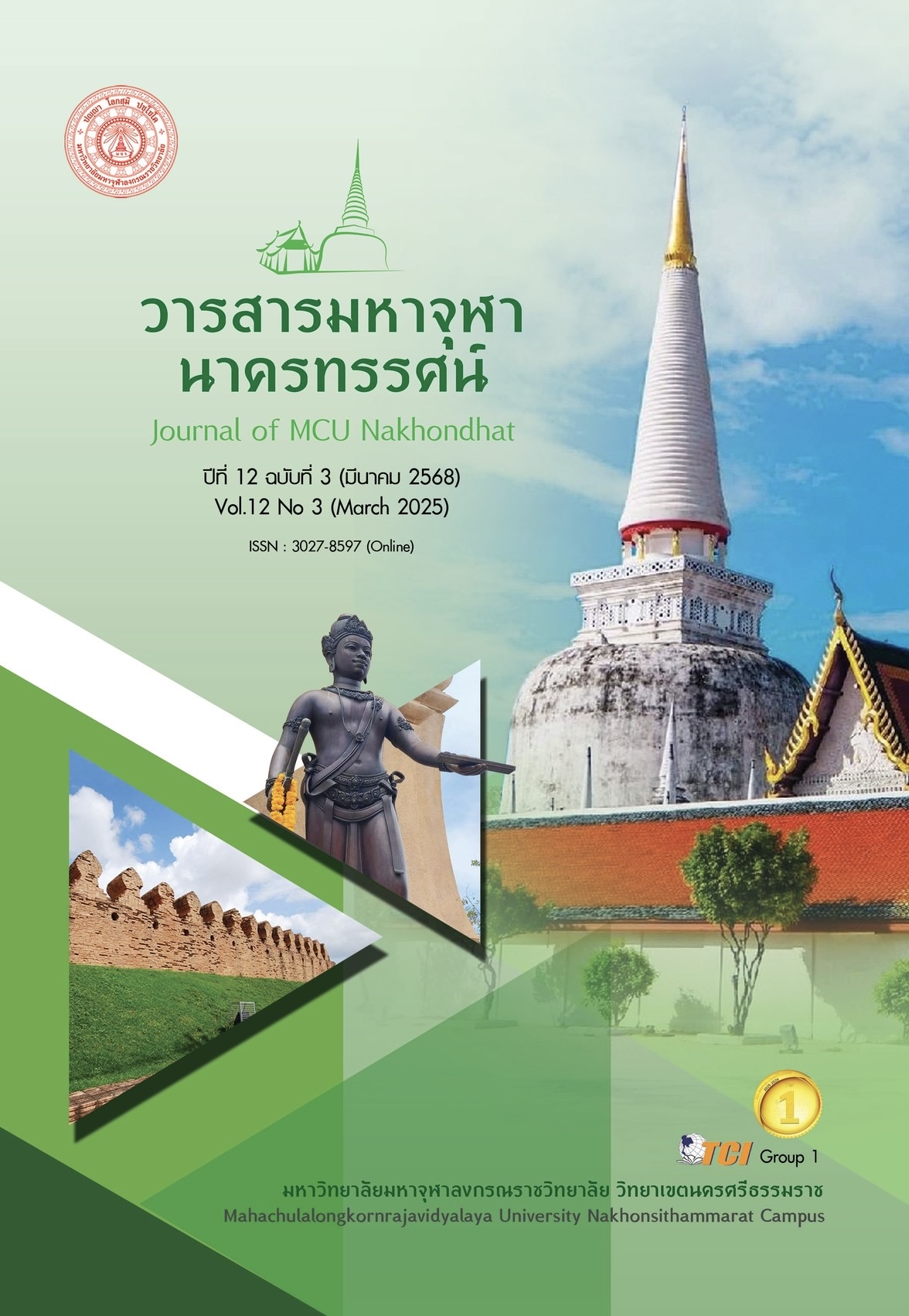การพัฒนารูปแบบภูมิคุ้มกันทางใจเพื่อป้องกันพฤติกรรมการรังแกสำหรับนักเรียนประถมศึกษาปีที่ 6 สำนักงานเขตพื้นที่การศึกษาประถมศึกษาปทุมธานี เขต 2
Main Article Content
บทคัดย่อ
บทความวิจัยนี้มีวัตถุประสงค์เพื่อ 1) ศึกษาสถานการณ์และปัญหา 2) พัฒนาและทดลองใช้รูปแบบฯ และ 3) ประเมินรูปแบบภูมิคุ้มกันทางใจ เป็นการวิจัยและพัฒนา กลุ่มตัวอย่าง ได้แก่ นักเรียนประถมศึกษาปีที่ 6 จำนวน 385 คน เครื่องมือที่ใช้ในการวิจัย ได้แก่ แบบสอบถามภูมิคุ้มกันทางใจ แบบสอบถามพฤติกรรมการรังแก แบบสอบถามความพึงพอใจต่อรูปแบบฯ คุณภาพเครื่องมือเท่ากับ 0.6 ถึง 0.8 เก็บรวบรวมข้อมูลด้วยแบบสอบถามทั้ง 3 ฉบับ สถิติที่ใช้ในการวิจัยและการวิเคราะห์ข้อมูล ได้แก่ ร้อยละ ค่าเฉลี่ย และค่าส่วนเบี่ยงเบนมาตรฐาน และทดสอบสมมติฐาน โดยใช้ Independent t-test และ Repeated Measures ANOVA ผลการวิจัยพบว่า สถานการณ์และปัญหา พฤติกรรมการรังแกสำหรับนักเรียนประถมศึกษา ปีที่ 6 สำนักงานเขตพื้นที่การศึกษาประถมศึกษาปทุมธานี เขต 2 แบ่งเป็น 2 ส่วน ได้แก่ 1) ข้อมูลทั่วไป ส่วนใหญ่เป็นเพศชาย ได้เงินมาโรงเรียนต่อวันระหว่าง 30 - 50 บาท บิดามารดาอยู่ด้วยกัน อาศัยอยู่กับพ่อ-แม่ และมีพี่น้องร่วมบิดามารดา 2 - 3 คน 2) ผลการวิเคราะห์ระดับภูมิคุ้มกันทางใจ โดยภาพรวมอยู่ในระดับปานกลาง การพัฒนารูปแบบภูมิคุ้มกันทางใจเพื่อป้องกันพฤติกรรมฯ และทดลองใช้รูปแบบฯ ประกอบด้วย PEC4S 1) S: Self Esteem 2) S: Self-Efficacy 3) E: Empathy 4) S: Self-Awareness 5) S: Self-Motivation 6) P: Positive Thinking 7) C: Conflict Resolution นำไปใช้ในนักเรียนกลุ่มทดลอง 30 คน หลังใช้รูปแบบ 8 สัปดาห์ มีพฤติกรรมการรังแกน้อยลง อย่างมีนัยสำคัญทางสถิติ กลุ่มทดลองดีกว่าก่อนใช้รูปแบบฯ และดีกว่ากลุ่มควบคุม อย่างมีนัยสำคัญทางสถิติ (p < 0.05) ผลการประเมินรูปแบบภูมิคุ้มกันทางใจเพื่อป้องกันพฤติกรรมการรังแก ความพึงพอใจ อยู่ในระดับมาก แสดงให้เห็นว่ารูปแบบสามารถป้องกันพฤติกรรมการรังแก และเกิดความยั่งยืนในการเรียนรู้ มีคุณภาพชีวิตที่ดี
Article Details

อนุญาตภายใต้เงื่อนไข Creative Commons Attribution-NonCommercial-NoDerivatives 4.0 International License.
เอกสารอ้างอิง
กรมอนามัย กระทรสุขวงสาธารณ. (2562). รายงานการสำรวจภาวะสุขภาพนักเรียน ในประเทศไทย พ.ศ. 2558. กรุงเทพมหานคร: สำนักงานกิจการโรงพิมพ์องค์กรสงเคราะห์ทหารผ่านศึก.
พรสุข หุ่นนิรันดร์. (2565). การรังแกและการรังแกผ่านโลกไซเบอร์ทั่วโลก. กรุงเทพมหานคร: มีน เซอร์วิส ซัพพลาย.
สถาบันสุขภาพจิตเด็กและวัยรุ่นราชนครินทร์. (2561). คู่มือปฏิบัติสำหรับการดำเนินการป้องกันและจัดการการรังแกกันในโรงเรียน. กรุงเทพมหานคร: บียอนด์ พับลิสชิ่ง.
อัสรี อนุตธโต และคณะ. (2564). ปัจจัยที่ส่งผลต่อพฤติกรรมการข่มเหงรังแกของนักเรียนชั้นมัธยมศึกษาตอนต้น. วารสารการวัดผลการศึกษา, 38(103), 158-170.
Best, J. W. (1977). Research in Education. (3rd ed). New Jersey: Prentice hall Inc.
Brown, J. & Salsman, J. (2019). Self-esteem, resilience, and well-being in adult populations: The role of self-acceptance. Journal of Psychological Research, 45(2), 103-115.
Brown, J. D. & Marshall, M. A. (2020). Self-Awareness Training and Its Impact on Bullying Prevention in Youth. Child Development Perspectives, 14(4), 215-222.
Carver, C. S. & Scheier, M. F. (2014). Dispositional optimism and physical health: A meta-analysis. Journal of Personality, 82(6), 429-450.
Creswell, J. W. & Poth, C. N. (2017). Qualitative Inquiry and Research Design Choosing among Five Approaches. (4th ed.). Thousand Oaks, United States of America: SAGE Publications.
Daniel, W. W. (2010). Biostatistics: A foundation for analysis in health sciences. (8th ed.). New York: John Wiley&sons.
Espelage, D. L. & Swearer, S. M. (2021). Self-Awareness and Peer Victimization: A Meta-Analytic Approach to Bullying Prevention. School Psychology Quarterly, 36(2), 87-99.
Field, A. (2000). Contrast and Post Hoc Tests for One-way ANOVA. Retrieved March 16, 2022, from https://discoveringstatistics.com/repository/contrasts.pdf
Hymel, S. & Swearer, S. M. (2015). Four decades of research on school bullying: An introduction. American Psychologist, 70(4), 293-299.
Karniol, R. et al. (2019). The role of empathy in helping behavior: A social perspective. Journal of Social Psychology, 159(5), 547-556.
Kim, Y. & Yang, Y. (2022). Understanding the Role of Self-Awareness in Adolescents’ Interpersonal Behaviors and Bullying Reduction. Youth & Society, 54(1), 92-107.
Sadeghi, N. & Ranjbar, F. (2014). The relationship between self-efficacy and resilience among students. Journal of Psychology, 12(4), 320-327.
Schlegel, K. & Scherer, K. R. (2018). Self-awareness and emotional intelligence in predicting psychological well-being. Emotion Review, 10(4), 306-315.
Seligman, M. E. P. (2011). Flourish: A visionary new understanding of happiness and well-being. NHRD Network Journal, 9(4),106-109.


